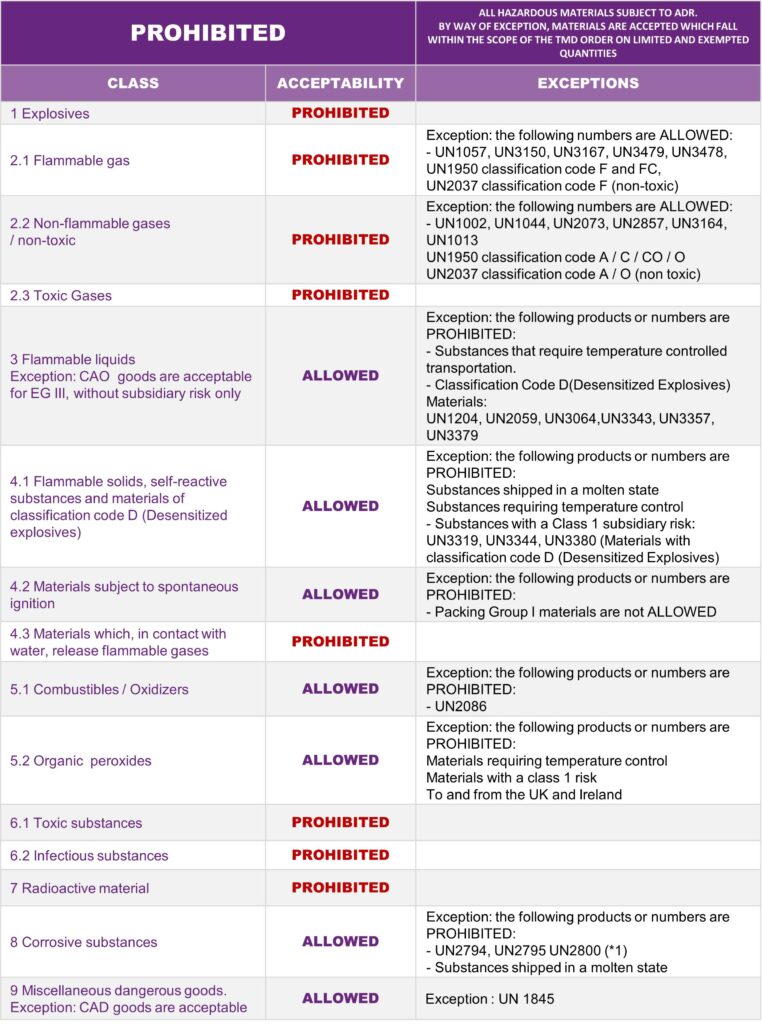ADR standards
Hazardous materials
As a matter of principle, COLIS PRIVE prohibits the transportation of all dangerous goods subject to ADR regulations.
The only exception to this is that goods are accepted if they fall within the scope of the French government’s Transport of Dangerous Goods Order on limited and exempted quantities, i.e.:
→ operations involving quantities below the transport thresholds (examples: transport < 333 kg for acetone; transport < 20 litres for phenyl mercaptan, etc.). Each hazardous good is assigned to a specific transport category (0, 1, 2, 3, 4), which indicates the maximum quantity that can be transported per transport unit (vehicle) with partial exemption from the ADR.
→ goods packaged in limited quantities (example: for acetone, inner package with a maximum capacity of 3 litres in a parcel with a capacity of 12 litres). Hazardous goods may be subject to exemptions because they are packaged in limited quantities (LQ). Hazardous goods must therefore be packed exclusively in combination packages (inner packages placed in suitable outer packages). In addition, each inner package and outer package (or parcel) must comply with the maximum quantities of goods determined by the ADR.
The consignor will retain full responsibility for the packaging and labelling of the parcels, in accordance with the standards set out in the ADR.
Certain classes of hazardous materials remain prohibited or are authorised by exception:

